Denver Fringe Tallies Up A Unique Immersive Run For 2025 (Festival Retrospective)
NoPro Denver Curator Danielle Riha looks back on this year’s fest
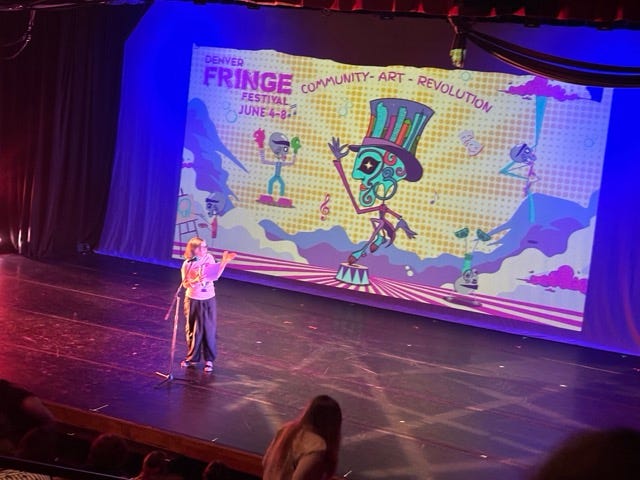

Six years in, and Denver Fringe continues to grow, innovate, and expand. Launched online amidst the pandemic with less than 20 shows in 2020, this year’s installation included over 70 performances at 15 different venues spanning all varieties of theater, including immersive (the best of which I’ve detailed below), burlesque, musical, comedy, magic, puppetry, clowning, and more.
This year, Denver Fringe also kicked off with an opening party that gave each performing act exactly 30 seconds to preview their show live on stage for other festival performers, staff, volunteers, and sponsors. This was a new addition to the kick off festivities that I think Fringe enthusiasts (i.e. full pass holders) would benefit from also having access to. Seeing everyone’s stage presence provided immense value to me, and I made some last-minute revisions to the finer details of my schedule as a result.
Note: details are revealed for each of the productions below, so if you’re looking to seek out remounts be aware that spoilers follow.
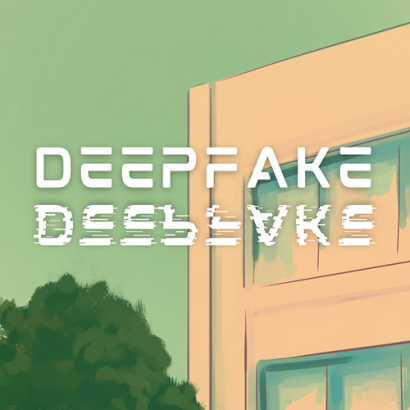
Deep Fake — Grace Goheen & Minh-Anh Day
The shortest experience with the biggest impact, Deep Fake was a 20-minute show designed for an audience of one. As I was ushered into a liminal, dimly-lit, Severance-looking room with a single cubicle in the middle of it, I sat down to a Zoom call already in progress where my colleague welcomed me back from vacation and we went straight to work catching up on what I’d missed.
Although we were still on track to launch our new AI software next week, he informed me that some ethical concerns had been raised by employees that were putting the launch at risk. As head of PR, it would ultimately be my decision to make if we’d go forward with the launch, and I was expected to make that recommendation to the CEO momentarily. My colleague informed me there were some materials to review on my desk, asked if I had any questions, and then left the Zoom call so I could prepare.
On my desk, I found some notes from a meeting with the product manager that outlined all the positive things the new software would do, like enhancing special effects, recreating historical figures for educational purposes, and generating avatars for people with communication disabilities. I also found an internal email from an employee that outlined their concerns, such as eroding trust in digital media, risk of impersonation, and threatening the work of human artists. There were also headline clippings tacked to the cubicle wall asking “Can Big AI Make Responsible AI?” and proclaiming “New Techniques Emerge to Stop Audio Deepfakes.”
A few minutes later, a new Zoom call opened on my screen. As expected, it was the CEO, and she got right to it, asking me point-blank what my recommendation was for the launch. I acknowledged the power and potential of the software, then pointed out the lack of regulation and high possibility of its abuse. With that in mind, I suggested we push back the launch and reallocate some of our funding towards advocating for legislation to protect us and our IP before making it available to the public.
“So, just to be clear,” she said to me, “you’re saying that we definitely shouldn’t proceed with the launch?”
As I opened my mouth to reply, the screen glitched and the window of my image started to reply in my voice with words that were not coming out of my mouth.
“Actually,” the deep fake of me said, “You know what? We should go forward with it.”
The CEO had a slightly confused look on her face but listened intently as the video of my likeness continued to give a full and detailed explanation of how this software has the potential to change the world and will put us ahead of all our competitors — the exact opposite of the recommendation the real Danielle had made only moments before.
“Okay, well, I recorded this call,” the CEO said to me, “so I’ll just pass along your decision and we’ll plan to lunch on Monday. Thanks!”
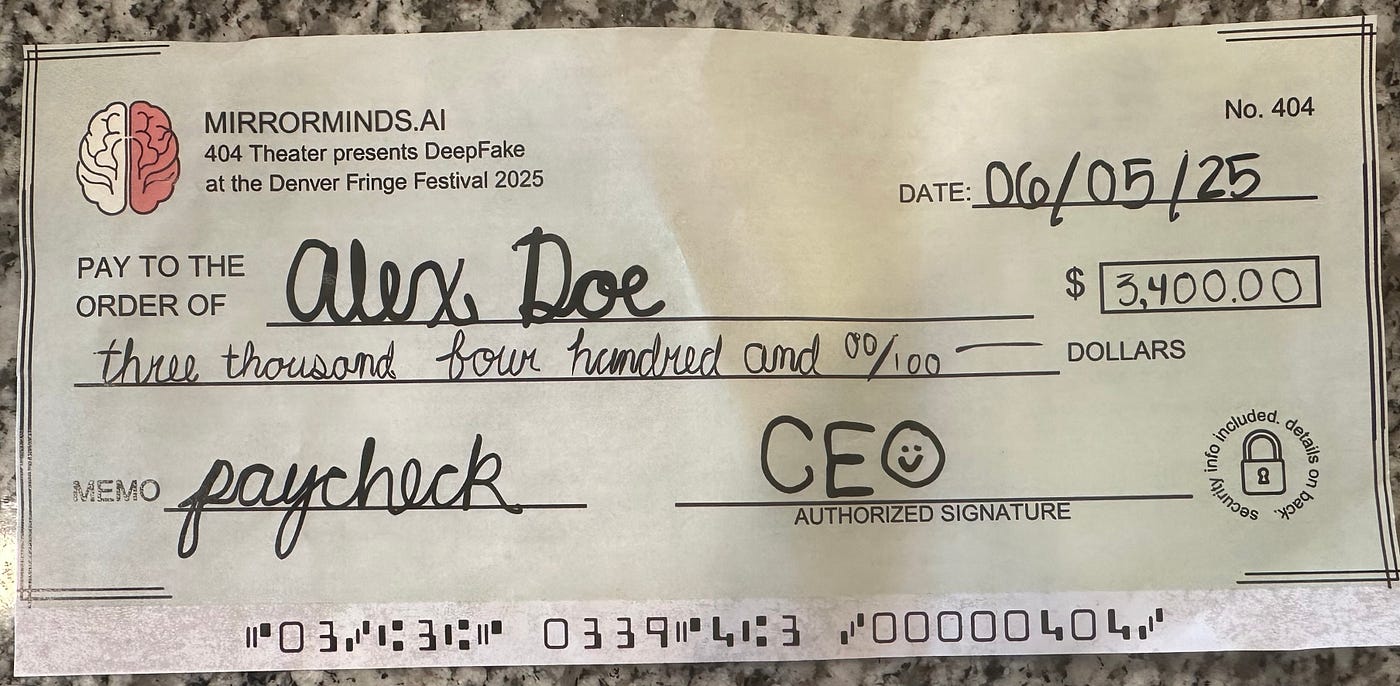
As I exited my cubicle, I was handed a $3,400 “check” from the CEO, with an explanation on the other side that answered the question of whether or not what had just happened was legal:
In Colorado, it is legal to record a call, even if you only have consent from one of the parties involved (CO Rev Stat 18–9–303(2024)). In this case, we only needed to obtain consent from your “coworker” in order to record that call. It is also legal to create a deepfake in most cases in Colorado, unless that deepfake is either of a candidate for public office (HB24–1147) or an intimate digital depiction, i.e. sexual content (SB25–288). On the federal level, it is legal to create a deep fake unless it depicts sexual content (Take It Down Act). We’re going to delete the deepfake of you, of course. But legally, we don’t have to!
Most of us know what a deepfake is and have seen one, probably of a celebrity saying something completely out of character. But how many of us have seen a deepfake of our own likeness, let alone have it be actively used against us?
While my first reaction to the deepfake was to sit back in my cubicle and laugh as I processed what I was seeing in front of me, it was, in retrospect, with this legal information that the full horror of the experience really hit me. What had just happened to me was completely within the boundaries of the law as they presently exist. The context was of course, fabricated and fictional, but the implication was not: deepfake technology is nearly impossible for humans to detect and can be used in incredibly deceptive (and potentially very harmful) ways.
Unfortunately, our society tends not to take such threats seriously until they’ve personally affected us as individuals, and that was exactly the point of Deep Fake.
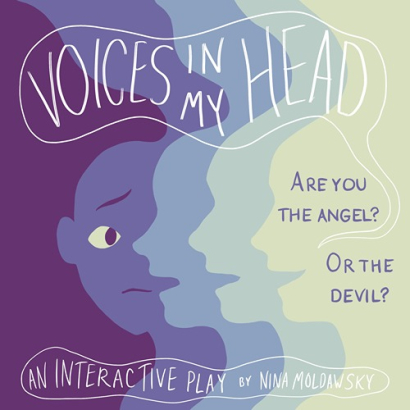
Voices in My Head — Nina Moldawsky
This show took place in a “coffee shop,” so the audience was scattered all over the small venue on comfy cushioned chairs as well as in more formal rows of seating behind that. A faux ordering counter stood at the front of the room, where we were addressed by one of the actors with five minutes of instruction on how the show would run.
The premise was simple, but they reinforced it well to minimize unwanted distractions during the performance. When blue light flooded the stage, that meant we (the audience) were in the main character’s head and were permitted to interact with them. When the blue lights went off, so did our ability to engage. We were also reassured that there was no shame in not giving the best or most practical advice to our main character. “You don’t have to be nice to Kris, but you do have to be respectful,” we were told as part of the instructions to not use any kind of derogatory language or slurs in our interactions.
As the show began, our main character ran into an old friend at the coffee shop where we were all sitting. As we coached them through the anxiety-inducing decision of what to order when their friend offered to buy, and then on to more challenging things like how to question their motives as a friend, it was clear from the beginning that this was a complicated relationship we’d been invited into.
My favorite works of immersive art are always rooted in a simple concept that can be grasped in a sentence or two. Those concepts are always tied to something familiar that we already know, and then the art bends it in some unexpected way.
Voices In My Head fit that bill by putting the audience in a scenario we’ve all been in before (an awkward encounter with an old friend) and then magically giving us the ability to tap out and pause time–just like in a sitcom–while evaluating options and asking “friends” for advice.
The mechanic of the show was simple, yet novel, and it involved the audience in a really fun, unique, and significant way that easily lends itself to repeat viewing. This was one of the most immersive shows at Denver Fringe this year, and one of my favorite performances of the weekend.
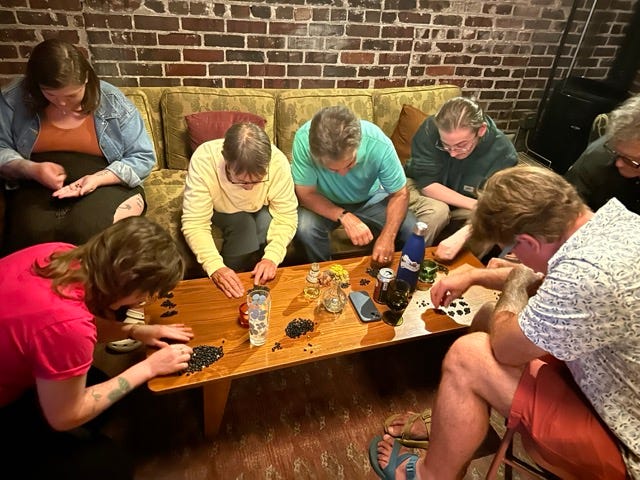
The Bean Counters — Benjamin Nicholson
This show opened with a robotic, mysterious monologue from our guide about how the walls and the floor and the ceiling hadn’t always been there. How they aren’t stable. How they resist when we push against them, but how a room will also sometimes collapse with people sitting inside. And are we sitting inside a room right now?
Get Danielle Riha’s stories in your inbox
Join Medium for free to get updates from this writer.
SubscribeSubscribe
(yes, we replied in unison)
“THEN WHAT ARE WE DOING?!” he exclaimed.
“From this moment forward,” our guide continued, “you will be given a new purpose. Your new purpose is to do ‘the work,’ that by which you offer your value to society. As we have heard on television, the work is mysterious and important. This is the work. You will count the beans.”
We were given one minute to deliberate and come up with a plan to count the beans.
“Please remember,” our guide reminded us, “if you do not fulfill a complete and accurate count of the beans it’s possible that the wall, ceiling and/or floor will collapse with you sitting inside. Do you understand what I’m telling you?”
We did, but despite our best intentions to come up with a logical plan, chaos and a pervasive sense of urgency fell upon the room once we started counting the beans. Some people took it quite seriously, counting with speed, discipline, and accuracy. Others like myself were counting, but at a more lackadaisical pace.
Someone started keeping a master count of everyone’s beans as each counter deposited their beans into the “counted” pile, while someone else roamed the room doling out more beans to anyone who shouted for them. All this, while our guide stood at the front of the room droning on and on about the walls, ceiling, floor and any other random fact or memory that he could mine from his memory.
I need more beans! someone shouted from the back corner of the room, seemingly unaware of the continuous drizzle of useless information pouring out of our guide, who was now our boss?
Several minutes into counting, he called for a check on the count. This took several minutes to compile, and since he was displeased with our progress, a bean counter was called at random to the front of the room for a performance evaluation. The bean counters paid no attention to the performance review as our boss levied a series of seemingly pointless questions at the bean counter. He concluded that we were not counting the beans fast enough and would need to exponentially increase bean counting and fire someone in order to “keep the investors at bay.”
As it was beginning to dawn on me that this experience was perhaps designed to mimic and exaggerate the absurdity of capitalism, one of my fellow bean counters shouted out to the room with a smile on their face, “Does anyone want to unionize?”
While our boss pressed on about selecting someone to be fired and “placed under a burial shroud” the unionizer cried out at the accused, “Look up from your beans! There’s a whole world out there!” and then began to chant “No worker murder! No worker murder!” Despite their best efforts to organize, I was surprised to see that no one, myself included, joined their cause. We simply continued to count the beans.
Throughout this eccentric show, when our guide/boss wasn’t serenading us over a lo-fi cassette tape, he was bombarding us with a non-stop flow of random, useless, and mildly interesting information, like a complete Wikipedia reading of both the color yellow and Coldplay song by the same name. All this while we were expected to continue “doing the work,” but with no explanation as to why or for who. At the end of the show, he very strongly suggested that it might all be for nothing. Or worse, that it’s all for someone else’s benefit and to our own detriment. Nevertheless, the bean counting must go on!
I’m still not sure what to make of my short lived career as a bean counter, but the bizarre experience felt in many ways akin to concepts explored in Aldous Huxley’s 1932 novel, A Brave New World, a book often compared in the same breath to George Orwell’s 1984. In all three stories, the main subjects are (rather easily) reprogrammed with a new sense of purpose that leads them to behave in ways that only serve those who are controlling them — by either limiting their exposure to real information, or overloading them with so much information that they lose the ability to process anything at all.
As they say, art imitates life. And sadly, this confusing exercise in compliance, conformity, and meaning-making, when I really stopped to think about it, wasn’t that far of a leap from our present-day reality.
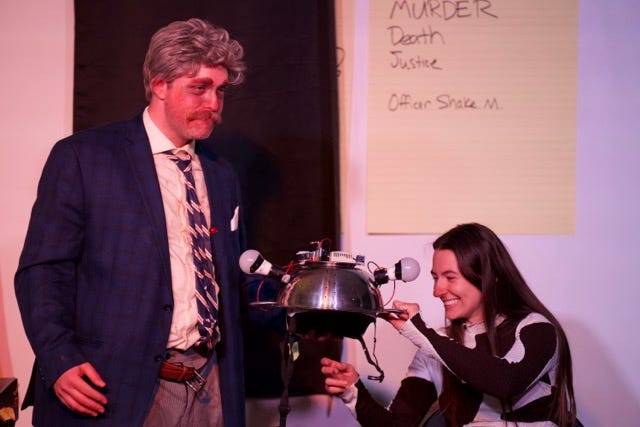
BJs Big Case — Patrick Reed
This show kicked off in celebratory fashion: we were at BJ’s surprise retirement party! Thing is, BJ had no intention of retiring. Not until he solved this one specific case, the one that he was never able to close.
It was clear from the start that BJ was a bit of a mess, but when he revealed his rigid medication schedule, we came to understand how grotesque of a man he truly was. Under strict doctor’s orders not to take his meds on an empty stomach, BJ would consume an entire McDonald’s cheeseburger before eating a handful of pills every time his alarm went off, which was every 10 minutes.
Winner of the Denver Fringe Audience Awards for the “Immersive” category, this unconventional comedy show simply would have ceased to exist without the audience. Patrick did all the work, but he centered every joke, every gimmick, so tightly around audience participation that each piece of our involvement felt natural and unprompted.
There was the tip line number written on the white board that, when dialed, interrupted whatever BJ was saying by ringing his cellphone. But he never got any tips on his tip line because every time someone in the audience would dial in and try to give a tip over the phone, they got shushed by BJ in person because he couldn’t hear who was talking to him on the phone!
BJ had another audience volunteer go around the room to measure peoples’ heights to see if any might be suspects in the case we were helping him solve. He also had a lie detector helmet that an audience member wore while he interrogated them (and possibly lit up with a remote?). At one point he even delegated medication administration to an audience member and had her chucking handfuls of pills into his mouth like popcorn.
This show was hilarious, absurd, a little disgusting, and highly interactive in a easy, low-stakes kind of way.

Bla Blah Blah — Soleil Kohl
This was one of the most talked about shows and most common answers when I asked fellow Fringers what was their favorite performance they’d seen so far. Though not listed in the program as “immersive” this interactive show totally fit that category, as it required the audience to share short personal stories about themselves, which the actor then responded to in character.
By “in character” I mean as the Bouffon-style clown that the performer created, a lumpy green thing from another planet who salivates over stories of deviance and debauchery. Every time someone in the audience shared a personal experience in which they were “the bad guy,” this alien would first appear to be surprised, then overjoyed. It would then respond by acting out an imagined, exaggerated scenario of the event the audience member just described, usually emphasizing the stupidity or cruelty of their actions.
Crucially, Soleil came on stage out of character before the show began to explain what Bouffon-style clowning is (a provocative form of theater that uses satirical mockery to explore societal ills) and to give a warning that the content was likely to be uncomfortable and possibly offensive, and to acknowledge that that’s okay, and by design.
In the end, the alien compared the acts we’d just explored to the greater, much more grandiose forms of hate and injustice that run rampant in our society. “You’ve done lots of horrible things,” they said to the audience, “but there are lots of horrible things in the world, too, right?”
I’m not sure whether that was to suggest that our horrific acts pale in comparison and we could never be as evil or corrupt as world leaders, or to suggest that it’s a slippery slope and if we’re not careful, these cautionary tales could lead to much more serious offenses. Either way, Blah Blah Blah was a curious, thought-provoking journey laced with tons of dark humor and the rare opportunity to hear complete strangers confess some of their most unsettling thoughts and actions. I hope to see it again soon!
Discover the latest immersive events, festivals, workshops, and more at our new site EVERYTHING IMMERSIVE, home of NoPro’s show listings.
NoPro is a labor of love made possible by our generous Patreon backers. Join them today and get access to our Newsletter and Discord! You can also GIFT memberships.
In addition to the No Proscenium website and our podcast, and you can find NoPro on Bluesky, Facebook, LinkedIn, YouTube, Instagram, and in the Facebook community also named Everything Immersive.